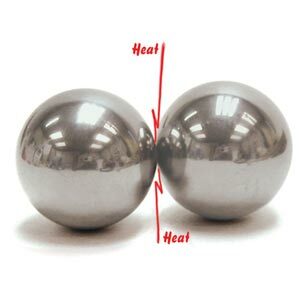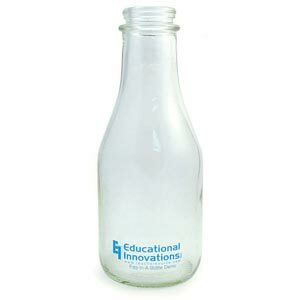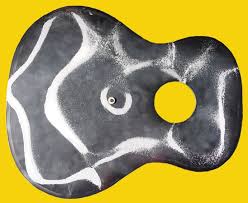July 9, 2010
 by: Martin Sagendorf
by: Martin Sagendorf
On a Bright Day:
A great deal of energy falls on the Earth’s surface – roughly 1 kW per square meter. This is about 0.6 Watt per square inch. This doesn’t sound like much energy, but suppose we collect and concentrate 63 square inches of this sunlight? These 63 square inches would collect about 38 Watts of energy. This doesn’t sound like much, but…
Suppose We Could Then:
Concentrate these 38 Watts into an area of only 1/8 of a square inch? This is exactly what we can do with an inexpensive plastic Fresnel lens. We’ll focus the sunlight into an area 3/8” in diameter – this is the equivalent of 300 Watts per square inch! With this energy level, we can easily ignite a piece of wood, boil some water, and even melt a penny.
A Suitable Device:
Is described in the book, Physics Demonstration Apparatus and in the blog The Sun’s Energy.
Now we’re going to describe how to build a much simpler version that works just as well – one that uses a very inexpensive Fresnel lens and is very easy to construct. Read the rest of this entry »
 7 Comments |
7 Comments |  College level, energy, experiments, High School level, Physics | Tagged: atomic penny vaporizer, awesome experiment, Fresnel lens, melting pennies, physics demonstration apparatus, solar energy |
College level, energy, experiments, High School level, Physics | Tagged: atomic penny vaporizer, awesome experiment, Fresnel lens, melting pennies, physics demonstration apparatus, solar energy |  Permalink
Permalink
 Posted by Tami O'Connor
Posted by Tami O'Connor
June 13, 2010
 by: Tami O’Connor
by: Tami O’Connor
When two 1-pound, 2-inch diameter, chrome steel spheres are smashed together, enough heat is generated at the point of contact to burn a hole in ordinary paper! This dramatic demonstration has been a favorite of students in every grade for as long as I have been teaching!
 There are a few considerations when allowing students (especially younger ones) to conduct this activity on their own… First, the spheres are pretty heavy, so if they were either dropped on a foot or onto a nice tile floor, the result would not be good. Also, be sure that the only thing between the spheres is paper or aluminum foil. Fingers caught between the colliding spheres would not be happy. Finally, all participants should wear safety glasses, as it is not unusual for a small piece of paper to fly off after the spheres collide.
There are a few considerations when allowing students (especially younger ones) to conduct this activity on their own… First, the spheres are pretty heavy, so if they were either dropped on a foot or onto a nice tile floor, the result would not be good. Also, be sure that the only thing between the spheres is paper or aluminum foil. Fingers caught between the colliding spheres would not be happy. Finally, all participants should wear safety glasses, as it is not unusual for a small piece of paper to fly off after the spheres collide.
Read the rest of this entry »
 2 Comments |
2 Comments |  College level, Elementary level, energy, experiments, High School level, Middle School level, Physics | Tagged: awesome science experiment, discrepant event, F=MA, kinetic energy, PBL, phenomenon based learning, shock waves, smashing steel spheres, thermal energy, thermite reactions |
College level, Elementary level, energy, experiments, High School level, Middle School level, Physics | Tagged: awesome science experiment, discrepant event, F=MA, kinetic energy, PBL, phenomenon based learning, shock waves, smashing steel spheres, thermal energy, thermite reactions |  Permalink
Permalink
 Posted by Tami O'Connor
Posted by Tami O'Connor
June 1, 2010
 by: Martin Sagendorf
by: Martin Sagendorf
We recognize heat & cold, dry & damp, light & dark, and sound & silence. However… I find it absolutely fascinating to consider that we also live within something that we can’t see, hear, touch, or taste.
We all Know:
Our planet has a giant magnet near its core and that its field extends over the whole of the Earth’s surface. But, do we ever really think about this field that passes through soil, rocks, buildings… and us? Granted, relatively speaking this ‘field’ isn’t particularly strong. In fact, it’s a rather weak field when compared to those of a horseshoe magnet or, particularly, a modern Rare Earth magnet.
A Great Demo to show Earth’s Magnetic Field:
Read the rest of this entry »
 Leave a Comment » |
Leave a Comment » |  Earth Science, Elementary level, experiments, High School level, magnetism, Middle School level, Physics | Tagged: compass, Earth's magnetic field, magnetism, neodymium magnet, simple classroom activity |
Earth Science, Elementary level, experiments, High School level, magnetism, Middle School level, Physics | Tagged: compass, Earth's magnetic field, magnetism, neodymium magnet, simple classroom activity |  Permalink
Permalink
 Posted by Tami O'Connor
Posted by Tami O'Connor
May 27, 2010
 by: Tami O’Connor
by: Tami O’Connor
One of my all time favorite air pressure activities is an oldie and a goodie! It involves getting an egg into a classic, hard-to-find milk bottle, like the ones  delivered to grandma’s door. Unfortunately, some students (and some teachers) still think an egg can actually be sucked into a bottle. As you probably know because the air pressure is greater outside of the bottle than inside, the better explanation is that the egg is literally pushed into the milk bottle.
delivered to grandma’s door. Unfortunately, some students (and some teachers) still think an egg can actually be sucked into a bottle. As you probably know because the air pressure is greater outside of the bottle than inside, the better explanation is that the egg is literally pushed into the milk bottle.
Here is the explanation… The milk bottle and egg demo begins by placing two or three burning matches or a burning strip of paper into the empty bottle. Then a shelled, moistened hard-boiled egg is placed on the mouth of the bottle. The egg is clearly larger than the opening in the bottle. The air inside the bottle begins to heat up and subsequently expands. It is easy to notice the egg dancing around a bit as the air inside the bottle escapes around it.
Read the rest of this entry »
 3 Comments |
3 Comments |  Chemistry, Elementary level, experiments, High School level, Middle School level, Physics | Tagged: air pressure, discrepant event, egg in the bottle trick, milk bottle, PBL, phenomenon based learning, science demonstration |
Chemistry, Elementary level, experiments, High School level, Middle School level, Physics | Tagged: air pressure, discrepant event, egg in the bottle trick, milk bottle, PBL, phenomenon based learning, science demonstration |  Permalink
Permalink
 Posted by Tami O'Connor
Posted by Tami O'Connor
May 21, 2010
 by: Martin Sagendorf
by: Martin Sagendorf
An Odd Name: They’re named for the German physicist Ernest Chladni who popularized them in the mid-1700s. His name is pronounced: kläd’nêz.
Chladni Plates are: Thin plates (sprinkled with fine particles) vibrated perpendicular to their plane.
How? – Then and Now: Long ago Chladni used a cello bow to excite the edge of a thin metal or wooden plate. Today, we can use an oscillator, amplifier, and an electro-mechanical oscillator. We have a great advantage, we can easily vary the frequency of excitation thereby providing a whole vista of experimentation.
A 17 in. x 14 in. Chladni Plate in guitar shape at 200 Hz
 Read the rest of this entry »
Read the rest of this entry »
 7 Comments |
7 Comments |  College level, experiments, High School level, Middle School level, Physics | Tagged: construct your own physics demonstrations, energy, Ernest Chladni, frequency, oscillator, resonance, sound, standing waves, vibration |
College level, experiments, High School level, Middle School level, Physics | Tagged: construct your own physics demonstrations, energy, Ernest Chladni, frequency, oscillator, resonance, sound, standing waves, vibration |  Permalink
Permalink
 Posted by Tami O'Connor
Posted by Tami O'Connor
 by: Martin Sagendorf
by: Martin Sagendorf


 Posted by Tami O'Connor
Posted by Tami O'Connor  by: Tami O’Connor
by: Tami O’Connor

